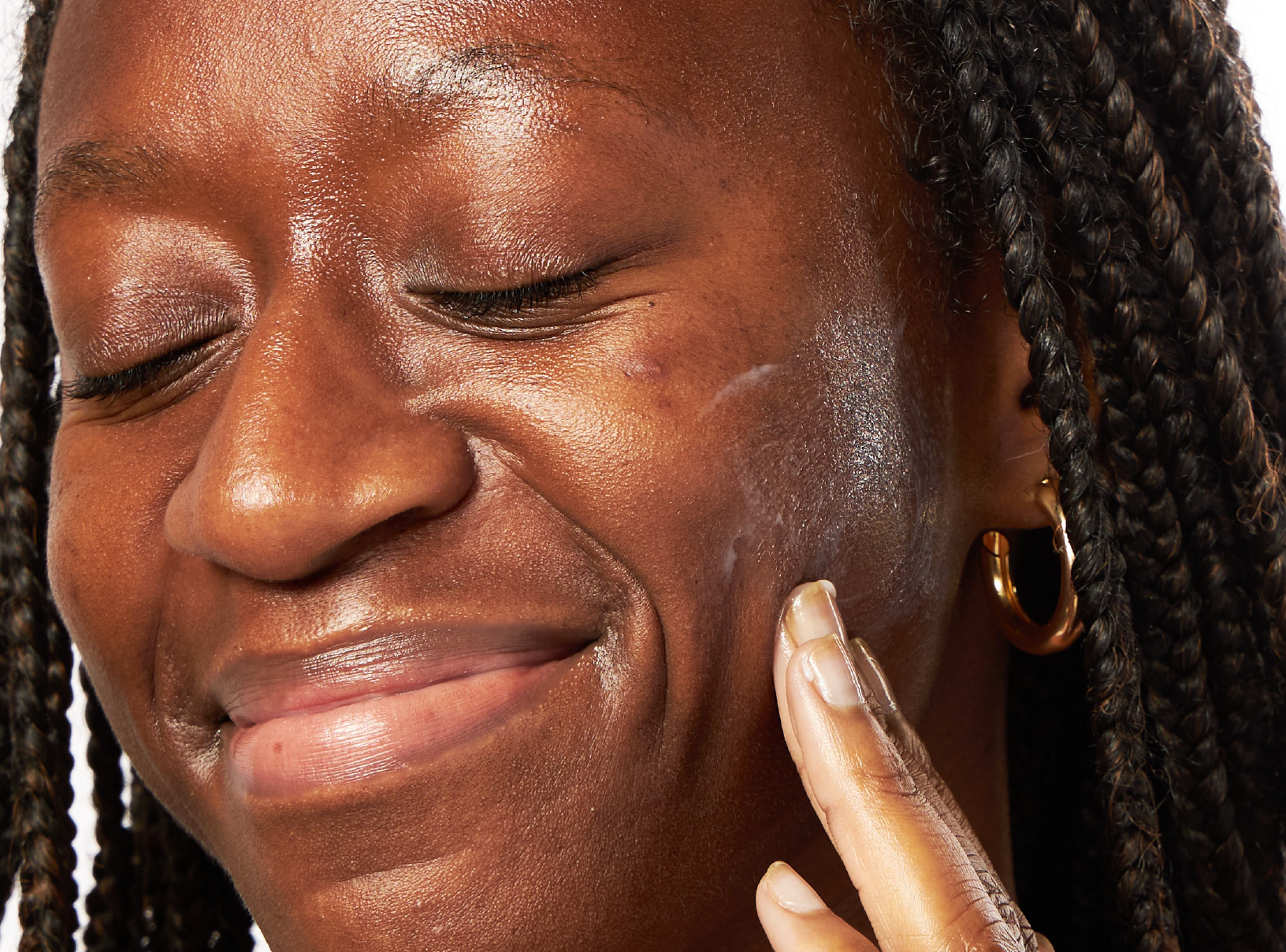Apostrophe Treatments
How To Change Up Your Routine When Starting Tretinoin
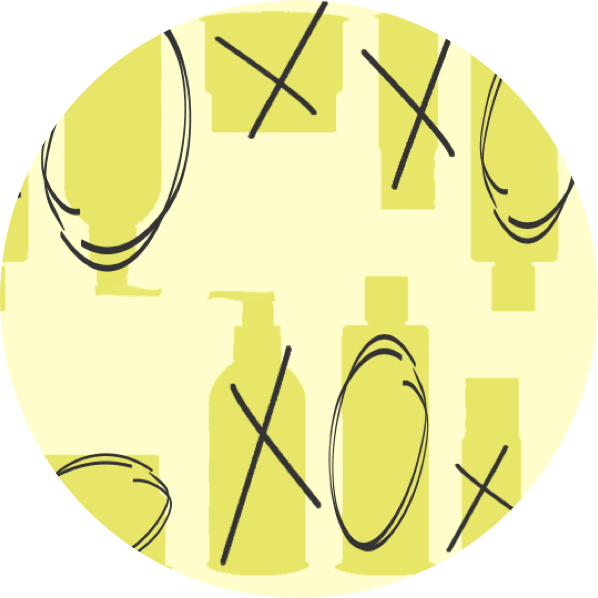
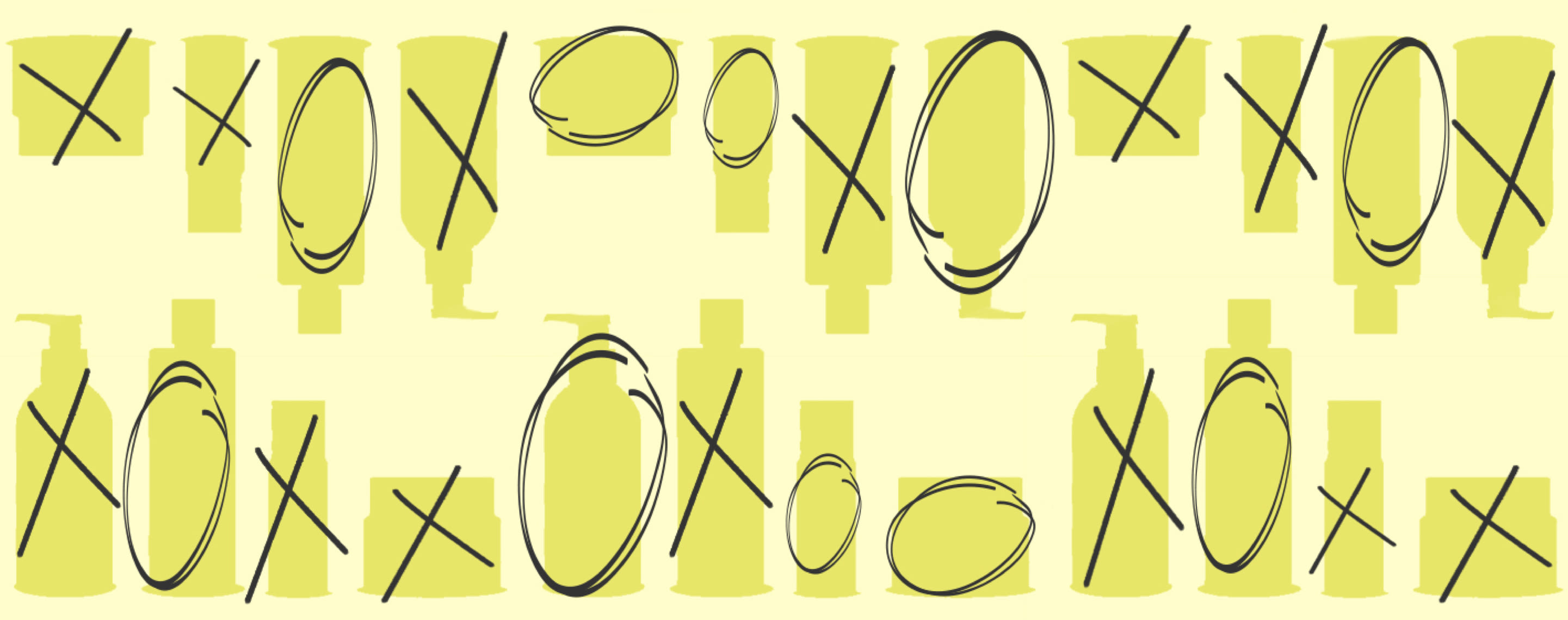
SHARE
Apostrophe Treatments
How To Change Up Your Routine When Starting Tretinoin
Medically reviewed by Aimee Paik, MD
Written by Daley Quinn
Last updated 10/5/2024
Yes, tretinoin might be the fan-favorite of every dermatologist, but that doesn’t mean your skin will instantly fall in love with it, too—well, at least not at first. The initial adjustment period when incorporating tretinoin into your routine can be a little rough, and it’s been known to promote flaking, redness, and some peeling once you start using it. Thankfully, though, there are other products you can add to your lineup (and some that you should probably set aside) to help minimize the effects a retinoid can cause on your skin.
A little goes a long way
Often called “the retinoid uglies,” dealing with the side effects caused by tretinoin are worth getting over the initial adjustment period because it’s such a great medication, according to Dr. Aimee Paik, a board-certified dermatologist. When first using tretinoin, “it’s important to start out slowly—a chocolate chip size or less is all you need for the entire face,” say Dr. Paik. “You’ll want to dot this on your forehead, cheeks, and chin, and then rub it in evenly across your face and onto your nose, avoiding your eyelids and the corners of your mouth and nose.”
The new lineup
Because tretinoin can be irritating upon initial use, it's best to simplify your skincare routine—so if you’re a total skincare junkie, that means subtracting, rather than adding more. “I would recommend starting off with a hydrating cleanser instead of a foaming cleanser, which tends to be drying,” says Dr. Paik.
After cleansing your skin morning and night, Dr. Paik recommends using a moisturizer formulated for sensitive skin, as those tend to be fragrance-free. A rich, creamy moisturizer will help prevent irritation and peeling from the tretinoin. In the morning, Dr. Paik strongly suggests following up your moisturizer with a gentle sunscreen every day, since tretinoin will cause sun sensitivity during the first six months of use.
In the evenings, you should apply your fragrance-free moisturizer, wait 10 minutes, and then apply your tretinoin. “When first starting a retinoid, you should apply it every other night for the first 2-4 weeks—this allows your skin to slowly adjust to the medication and prevent much of ‘the retinoid uglies,’” says Dr. Paik. “After the first month or so, you should then try applying it nightly. Tretinoin works best when used consistently, but you should skip a night or two if your skin is flaky or red.”
Ingredients to avoid
When it comes to incorporating tretinoin into your routine, less is definitely more, and it’s important to avoid certain ingredients to minimize irritation. “When using tretinoin, I would stop using products with salicylic acid or retinol, since they are wholly redundant to tretinoin,” suggests Dr. Paik. “They would not provide any added benefit over tretinoin and can contribute to irritation.”
Additionally, Dr. Paik advises to hold off on using any products containing AHA’s (like lactic acid or glycolic acid) when you’re first starting out with tretinoin because the combination of the two can be too irritating. AHA’s “could be cautiously added back [into your routine] once your skin gets adjusted to tretinoin, since the combination can produce good skin results,” says Dr. Paik.
Benzoyl peroxide, an acne ingredient that can also be irritating, is another ingredient you might want to avoid when starting tretinoin. “I would follow your doctor’s advice about whether to incorporate benzoyl peroxide into your routine and I would opt for a lower concentration when possible,” says Dr. Paik. “Finally, I would avoid masks, serums, scrubs, facial brushes, or plant extracts, since there is little evidence that they help and they can be irritating, too.”
If you're looking to add this gold-standard ingredient to your skincare routine, get started with Apostrophe today. If prescribed, you'll receive a customized treatment plan crafted by an expert dermatology team and be on your journey to healthy skin!
*A note on benzoyl peroxide. In March 2024, Valisure shared results of a study that showcased that benzene can form in benzoyl peroxide (BPO) products. We currently recommend avoiding benzoyl peroxide products until the FDA provides more guidance on the safety of BPO.
Shop this post
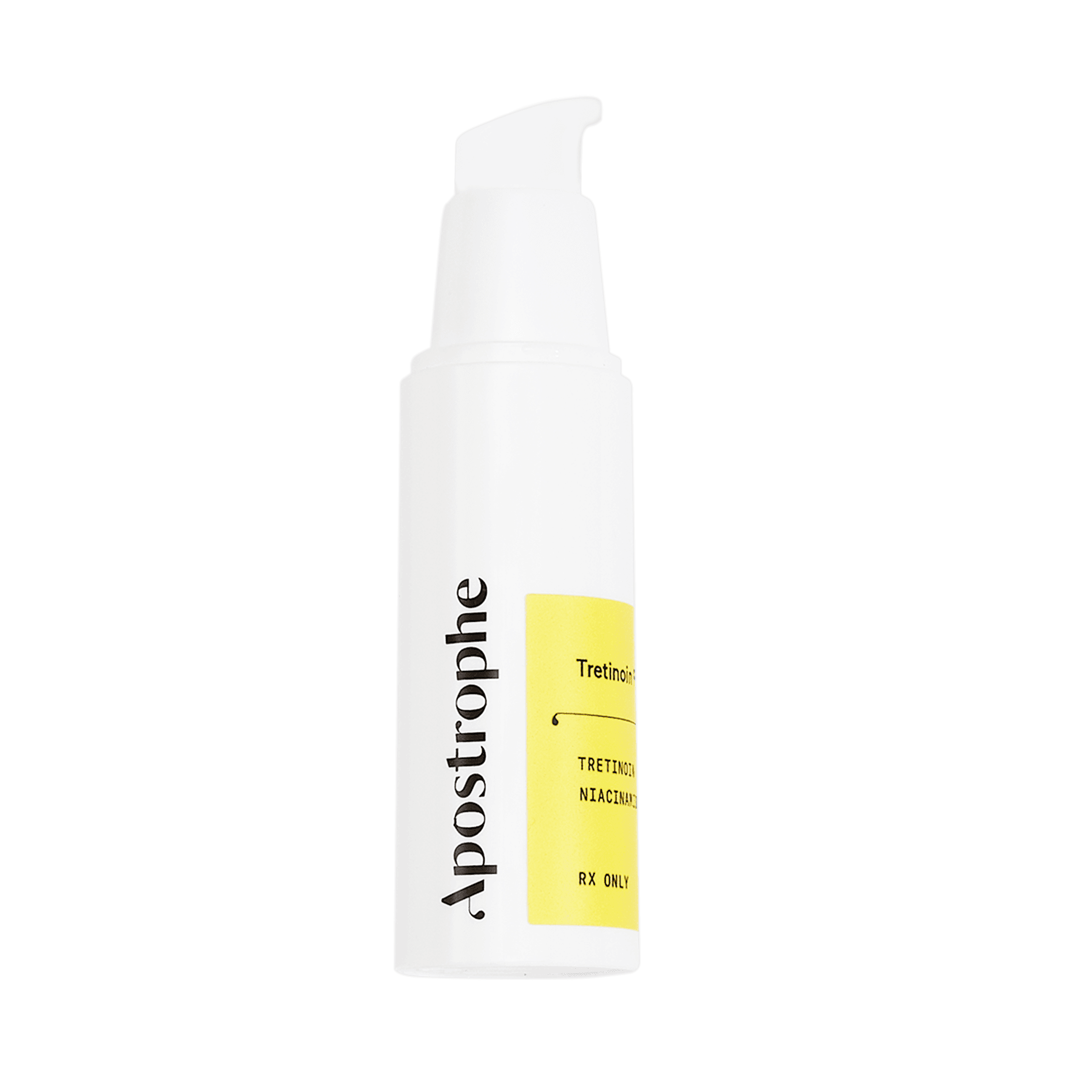
Tretinoin
Like what you just read? Sign up for our email list to get the scoop on skincare science delivered straight to your inbox.

Education
What is milia?
What is milia? Today, we’re jumping into one type of bump that you may have heard about most commonly in infants — milia.
Read More
Education
Best moisturizer for acne-prone skin
If you have combination acne-prone skin, figuring out which moisturizer is best for your skin might be tough. In this guide, we break down the best moisturizer for combination, acne-prone skin.
Read More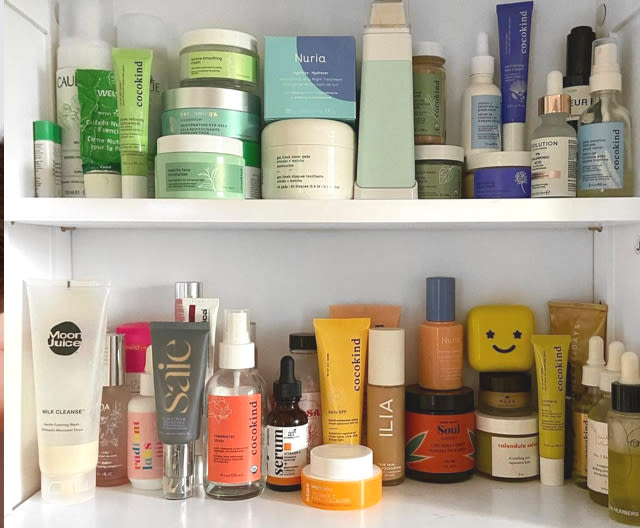
Education
How to build a face care routine
As you get into skincare, it might seem overwhelming, especially trying to figure out the order you're supposed to apply products in. Below, we detail how to build a face care routine for your skin!
Read More
